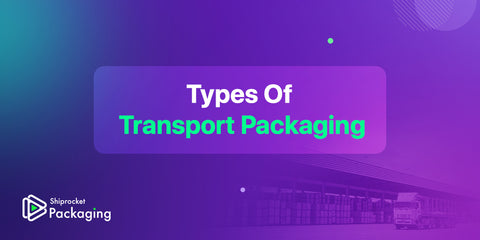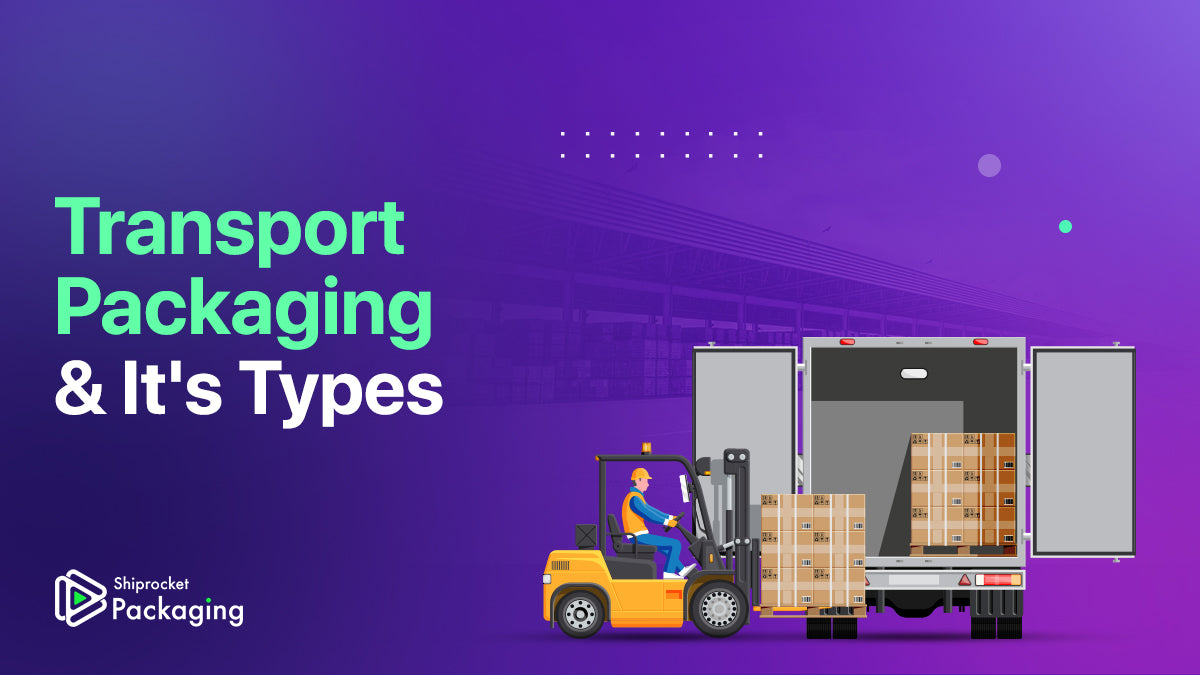What Is Transport Packaging?
When we hear the word ‘packaging’, our initial thoughts are retail packaging or the material used to ship products to the end consumer. What is often overlooked in packaging is ‘Transport Packaging.’
Transport packaging is mainly used for B2B purposes and is built to withstand various transportation stressors such as moisture, vibration, compression, etc.
Moreover, transport packaging is quite different from retail packaging. Regarding retail packaging, the focus is more on the presentation and promotion of products, while transport packaging prioritizes the durability and security of goods.
Transport packaging is an integral part of any business's supply chain. Using reliable packaging minimises product damage and puts your business forward. Let's learn about the benefits, levels and different types of transport packaging.
The 3 Level Of Transport Packaging?
Here are three levels of transport packaging:
Benefits Of Transport Packaging
Using the suitable packaging material plays an important role in transport packaging. When you use the right packaging material, you not only facilitate efficient movement of goods, but also ensure seamless business operations. Here are the key benefits of transport packaging-
- Protection of goods - One of the primary benefits of using appropriate transport packaging, is the protection of goods from any kind of compression, vibration, moisture, during the movement of goods. Using the correct packaging minimizes the risk of damage.
- Streamlined logistics - Transport packaging ensures seamless movement of goods from one place to another. From smoothly stacking and loading to unloading and picking using the correct transport packaging, ensures goods are delivered to its destination safely.
- Reduction of losses - When goods reach their destination safely without damage, business losses are minimisedss losses. You save on expenses like replacement costs, shipping costs, and damaged products.
Types Of Transport Packaging

There are different types of transportation packaging. Each has its unique strengths and weaknesses and is exclusive to different packaging needs. Here are the top transport packaging -
-
Cardboard
Cardboard boxes are the most commonly used transportation packaging. They are made of fireboards which are made of wood fibres. This type of packaging is often used to package lightweight items such as food, cosmetics, etc. They are widely used due to their versatility, cost-effectiveness and recyclability.
-
Bagged Cargo
Bagged cargo is basically products transported in a bag. This type of packaging is best for packaging smaller items that can be easily placed in the bags. These bags are then further loaded in bigger containers, boxes, and crates for an additional layer of protection. Food products like fertilizers, sugar, flour, seeds, etc., are packaged and shipped in bagged cargo.
-
Pallets
Pallets are platforms made of wood, plastic, or metal that facilitate efficient handling and transportation of goods. Pallets help in the easy movement of goods and proper utilization of packaging spaces.
-
Wooden Crates
Wooden crates are mostly used for heavy-weight or bulky items. This mode of packaging ensures that heavy weight items like machinery, equipments, etc remain in their place. Made of plywood or lumber, wooden crates can be made to fit any size of product.
-
Steel Drums
Steel drums are a type of packaging material that are cylindrical in shape and are have versatile storage purposes. These drums are made of steel, and is welded shut once loaded, this ensures that your products is protected from any spillage or damage in transit. Items like cooking oils, chemicals, liquid products are often shipped in steel drums.
-
Containers
Containers are one of the most common method of transport packaging. Containers are usually shipped via ship, train, and plane. Depending on your needs for shipments, there are two types of containers, namely dry and refrigerated. Dry containers are used for non-perishable goods, while refrigerated containers are used for perishable goods.
Conclusion
In conclusion, transportation packaging plays a crucial role in the safe movement of goods through the entire supply chain process. No matter what level of packaging material you’re using, primary, secondary, or tertiary, the foremost motive for transport packaging is to ensure the protection of goods in the best possible manner.
In a world where fast delivery and customer satisfaction is paramount, transport packaging enables efficient movement of goods from one place to another. It not only assists with easy loading, unloading, stacking, and movement of goods but als helps in reducing losses and facilitates efficient logistics.
